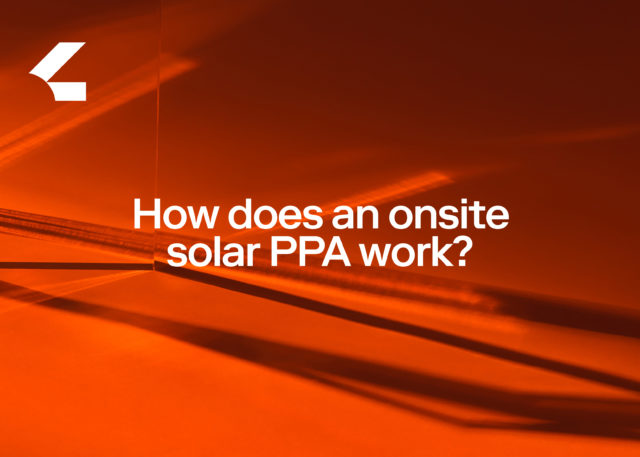To play a more vital role in environmental sustainability, you can produce your own green electricity. By contributing new renewable electricity to the grid, you’re making a greater positive impact through additionality.
More companies and organizations are discovering the benefits of producing their own electricity. It has become more common for companies to invest in solar energy through photovoltaic plants (PV plants) or buy solar as a service (PPA).
Both GoOs and renewable electricity production help to reduce the company’s CO2 footprint. The biggest difference between buying GoOs and renewable electricity production is additionality. In this article, we’ll take a closer look at additionality and when you can claim it. We’ll start with a deep dive on GoOs.
Guarantees of origin
GoOs are documents that guarantee the origin of the electricity. The purpose is to inform the electricity user how their electricity was produced. Those who produce renewable electricity receive the GOs, which they can later sell to end users.
When renewable electricity is sold to end users, the same amount of GoOs are cancelled in the name of the end user. The end user thereby has the legal right to claim that they use green electricity. For companies who claim to use 100% renewable electricity, buying GoOs is critical.
Electricity added to the market
Buying GoOs does not directly increase the share of renewable electricity in the grid. Only additionality does. The concept has slightly different meanings in different contexts. Here’s a simple way to define additionality via cause and effect: without my action, a certain result would not have arisen.
In the context of solar energy, additionality means that a solar plant will add new solar electricity to the electricity market—which otherwise would not have happened.[1] This could translate into two possibilities: (1) building a solar park on land that would otherwise have been used for something else, or (2) setting up a solar plant on the roof of your company’s facility.
[1] Download page 6-7
Companies that install their own power plants reduce society’s carbon dioxide emissions and the company’s own CO2 footprint. The power plant adds new renewable electricity to the electricity grid, which increases the share of renewable electricity in the grid. GoOs do not have the same effect.
Additionality makes a significant impact helping countries get closer to their renewable energy goals. It also reduces the share of fossil power in Europe. The bigger the solar plant, the more additionality you contribute. Companies that build their own solar plants can also differentiate themselves from their competitors who merely purchase GoOs.
How high are you aiming?
Obviously, having an electricity agreement with GoOs is better than not doing anything at all. After all, you’re still securing green electricity for your business and reducing your CO2 footprint. But the GoOs alone do not contribute to additionality. On the other hand, building a new solar plant directly increases the amount of renewable electricity in the electricity grid.
One of those companies that have chosen to go beyond GoOs by producing its own energy is Heineken. From the perspective of the Heineken’s leaders, beer is produced with renewable energy only if the company invests in its own energy plants. Heineken says GoOs are a first step, but they only compensate for the electricity used. Therefore, Heineken has decided to invest in installing its own power plants.
“Now is the right time to set new targets,” Heineken CEO Jean-François van Boxmeer said. “When I visit our breweries, I want to see that we are brewing with real green energy and that we are not achieving our reduction targets by buying unbundled certificates.”
What’s the best approach for your organization to go green? It depends on how you want to make your mark in the world. If you want to lead the way to renewable energy and show the world that you are making a real impact on the environment and its future, the choice is clear: go beyond GoOs and produce your own solar electricity.

